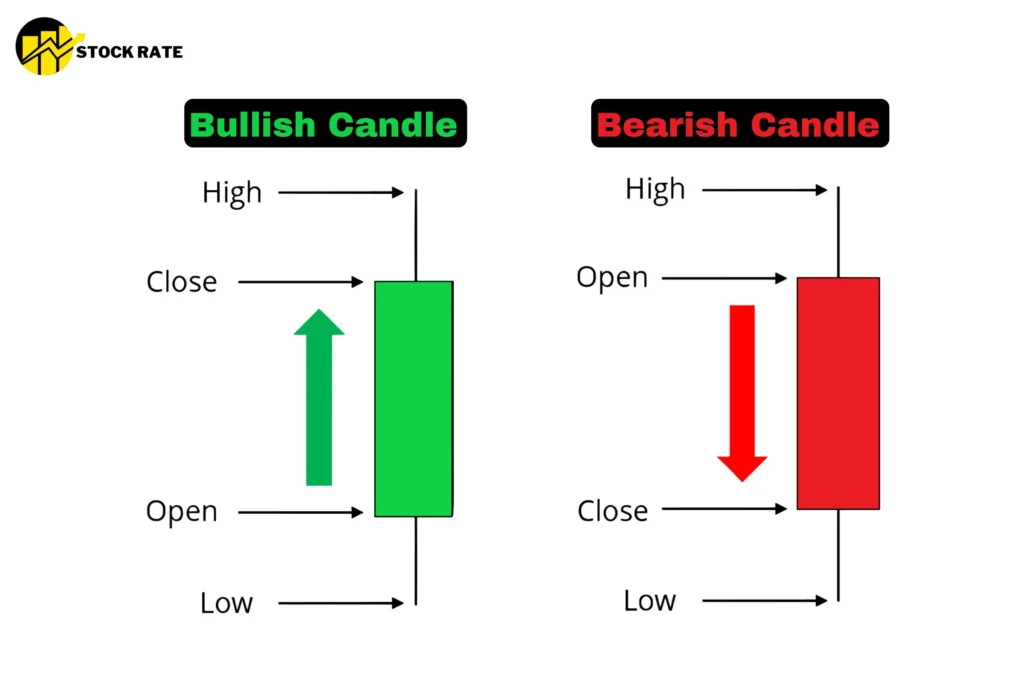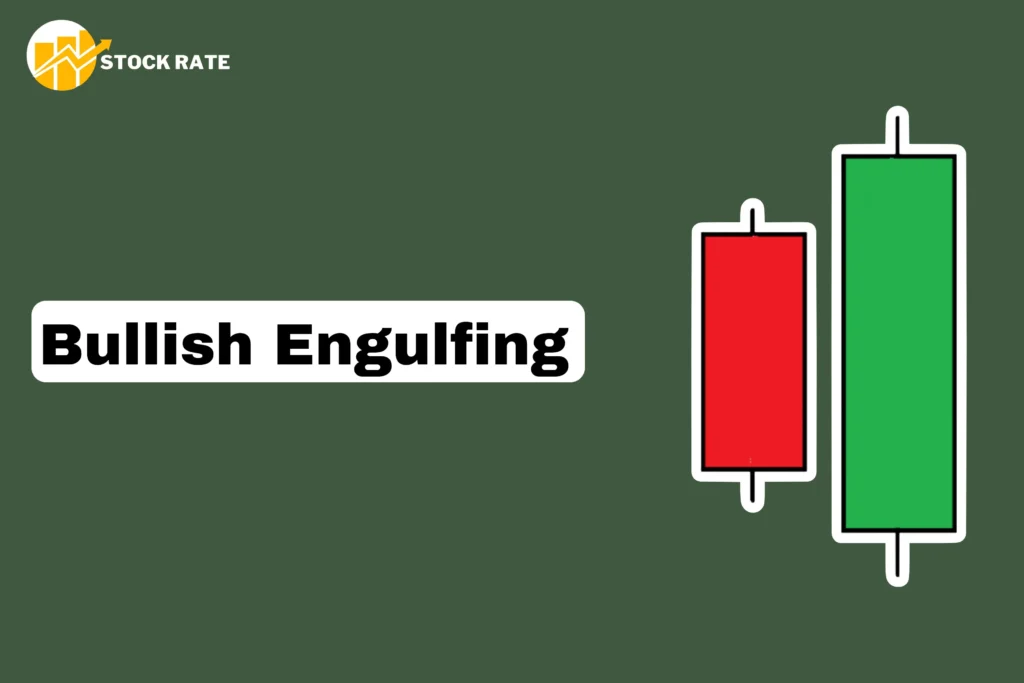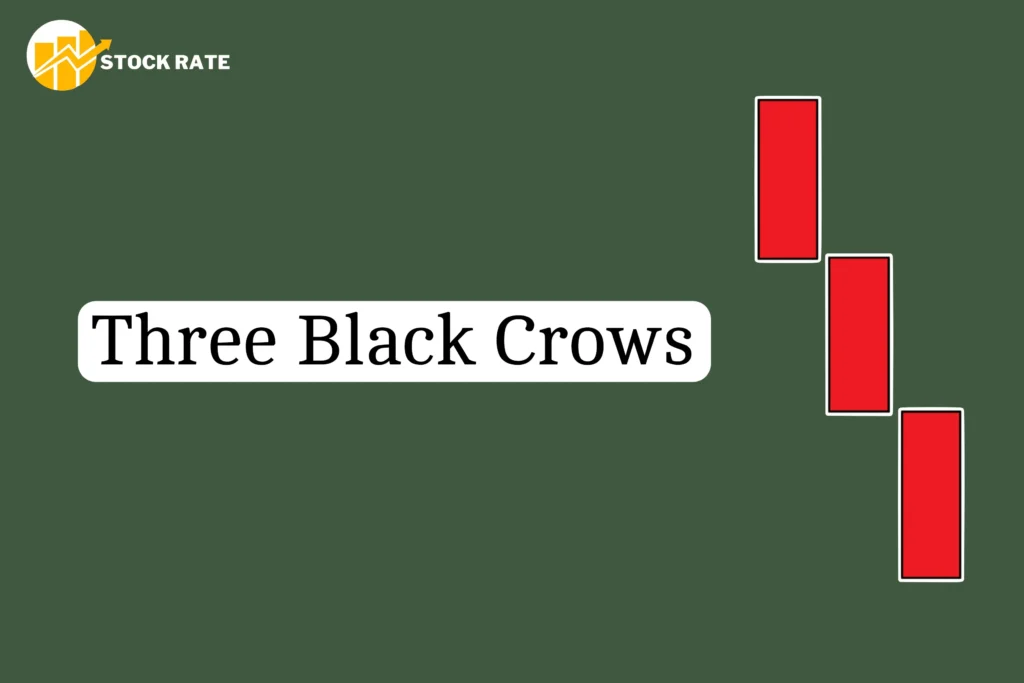Introduction
In the rapidly changing environment of stock markets traders and analysts are frequently dependent on technical analysis to make accurate decisions. Candlestick patterns are an important technique in technical analysis. These patterns are generated by the sequence of candlesticks on a chart that provide useful information about market emotions and predicted price moves. In this detailed introduction we’ll look at the exciting world of candlestick patterns also including their significance, principles and classification.
What Is Candlestick Patterns

Candlestick patterns are visual representations of price changes in stock markets. Each candlestick has a body, wick or shadow. The body shows the opening and closing prices while the wick or shadow show the price range over a certain time period. These candlesticks establish patterns throughout time and offer visual information to analysts.
Learning candlestick patterns requires knowing all the different forms that may take place. Patterns are produced by sequentially arranging multiple candles. For example a “engulfing pattern” appears when one candlestick’s body engulfs the whole body of the preceding candle indicating a possible market reversal.
Importance of Candlestick Patterns in Trading
Traders use candlestick patterns to make decisions because they can provide important information about market conditions. These patterns are important for recognizing trend reversals, continuation and probable market moves. If you’re an experienced trader or a beginner knowing candlestick patterns may help you analyze and predict market trends.
Types of Candlestick Patterns
Candlestick patterns can be divided into three types: Bullish Candlestick Patterns, Bearish Candlestick Patterns and Continuation Candlestick Patterns. Each category has a specific role in helping traders in predicting and reacting to market changes.
List of 35 Powerful Candlesticks Patterns
| Bullish Candlesticks Patterns | Bearish Candlesticks Patterns | Continuation Candlestick Patterns |
| Bullish Engulfing | Bearish Engulfing | Doji |
| Hammer | Hanging Man | Falling Three Methods |
| Inverted Hammer | Shooting Star | Rising Three Methods |
| Morning Star | Evening Star | Mat Hold |
| Bullish Marubozu | Bearish Marubozu | Upside Tasuki Gap |
| Bullish Harami | Bearish Harami | Downside Tasuki Gap |
| Three White Soldiers | Three Black Crows | Spinning Top |
| Piercing Line | Dark Cloud Cover | Rising Window |
| Three Inside Up | Three Inside Down | Falling Window |
| Tweezer Bottom | Tweezer Top | |
| Bullish Three Line Strike | Bearish Three Line Strike | |
| Bullish Counterattack | Bearish Counterattack | |
| Three Outside Up | Three Outside Down |
Explained List of Candlestick
1. Bullish Candlesticks Patterns
Bullish candlesticks which frequently appear in green color and signify an upwards market trend. They can be used as reversal indications or bullish reversal patterns. When created after a downtrend these candles might signal a move from downward to upward trend and push traders to exit short holdings to create new long positions.
- Bullish Engulfing: The bullish engulfing pattern is formed when a green candle totally engulfs a bearish candle. In simple terms the bullish candle completely covers or engulfs the bearish candle.

- Hammer: The hammer candle is a single candlestick form with a short body and a lower wick that is at least twice as long as the body. It might have no upper wick or a little upper wick.
- Inverted Hammer: The inverted hammer is a single candlestick with a little body similar to the hammer. The upper wick is a minimum of twice the size of the body while the bottom wick might be absent or very little.
- Morning Star: A bullish reversal pattern made up of three candles: a bearish candle, a Doji and a bullish candle that indicates buyer power in the market.
- Bullish Marubozu: It is a bullish reversal candlestick with no upper or lower wicks. It’s also called a Full body candle and shows the full strength of buyers in the market.
- Bullish Harami: Bullish Harami pattern formed by two candlesticks, the first is bearish while the second is a little bullish candle that opens and closes inside the bearish candle.

- Three White Soldiers: Three white soldier patterns formed by three bullish candles with no wicks. Opening below the previous closing and closing above the last candle’s high.
- Piercing Line: This is a bullish reversal pattern with two candles, the first bearish and the second opening with a gap that covers more than half of the first candle that indicates the downtrend.
- Three Inside Up: This pattern is formed of three candles: the first is bearish, second that opens and closes within the first bearish candle and the third resembles a bullish harami.
- Tweezer Bottom: This pattern consists of two candlesticks, the first bearish and the second bullish.

- Bullish Three Line Strike: A bullish three line strike includes four candles. The first 3 are bullish while the final is bearish. The first three candles are bullish and closing higher. The fourth candle is bearish, closing below the pattern’s low.
- Bullish Counterattack: This is a bullish reversal pattern made up of two candles, the first of which is bearish and the price starts lower and closes within or above the previous candle’s close.
- Three Outside Up: Three outside up is a three candle pattern with an initial bullish candle followed by a bigger bullish candle that covers the first similar to a bullish engulfing pattern.
2. Bearish Candlesticks Patterns
Bearish candlesticks suggest a downtrading market. These candles are typically displayed in red. These also function as reversals. This is why we call them bearish reversal patterns.
- Bearish Engulfing: The bearish engulfing candlestick pattern is a technical analysis chart pattern that is recognized as one of the most prominent signs of a price cut action signal. It appears with a green candlestick followed by a red candlestick that completely engulfs the green candlestick.

- Hanging Man: The hanging man candlestick pattern is a single candlestick style with a short body and a lower wick that is at least twice as long as the body.
- Shooting Star: Shooting star candlestick is a single candlestick with a tiny body and an upper wick that is at least twice as big as the body sometimes without no bottom wick.
- Evening Star: Evening star pattern is a bearish reversal pattern made up of three candles: a bullish candle, a Doji and a bearish candle which represents seller dominance.
- Bearish Marubozu: Bearish marubozu candle is a solid bearish candlestick with no higher or lower wicks indicates intensifying selling pressure and dropping bullish strength.
- Bearish Harami: Bearish harami pattern consists of two candlesticks: the first is bullish and the second is a little bearish candle that opens and closes within the bullish candle.
- Three Black Crows: This pattern formed by three bearish candles with no shadows and opening above the previous close and ending below the low of the final candle.

- Dark Cloud Cover: Dark cloud cover pattern is made of two candles, the first bullish and the second opening with a gap that extends more than half of the first candle suggesting an ending uptrend.
- Three Inside Down: Three inside down candlestick pattern formed of three candles: the first is bullish, the second opens and closes within the first bullish candle replicating a bearish harami.
- Tweezer Top: Tweezer top consists of two candlesticks the first bullish and the second bearish both with the same high.
- Bearish Three Line Strike: The three line strike pattern is a series of candlesticks that include three bars in the direction of a trend followed by a final candle that comes back to the starting position.
- Bearish Counterattack: This pattern is made of two candles with the first being bullish with the price opening higher but ending near or below the previous candle’s close.
- Three Outside Down: Three outside down candles are made by three candle pattern with a small bullish candle followed by a bigger bearish candle covering the first that is similar to a bearish engulfing pattern.
3. Continuation Candlesticks Patterns
- Doji: Doji is formed when market uncertainty happens also when buyers and sellers are unable to control prices. That’s why this led to indecision in the market, and Doji formed.

- Falling Three Methods: This pattern is made of five candles with two bearish candles containing three shorter candlesticks inside them.
- Rising Three Methods: Rising each method is a bullish pattern made up of five candles. This pattern indicates a pause but has no effect on the continued upward trend.
- Mat Hold: This pattern is formed of five candles. This pattern acts as a bearish pattern or a bullish pattern. It is a kind of neutral candlestick pattern.
- Upside Tasuki Gap: This pattern features three candles; the first and second are both powerful bullish candles and the third a bearish candle that closes the gap created by the previous two.
- Downside Tasuki Gap: This pattern features three candles the first and second are both powerful bearish candles and the third a bullish candle that closes the gap created by the previous two.
- Spinning Top: The spinning top is a candlestick pattern containing a short actual body that is vertically centered between extended upper and lower wicks. This pattern suggests confusion about the stock’s future path indicating that neither the buyers nor the sellers had the power to take control.

- Rising Window: Rising Window candlestick pattern is formed by two candles that is a bullish continuation pattern appearing during an upswing. The pattern’s candles can be of any kind with the possible exception of the Four-Price Doji. Most essential feature of this pattern is the price difference between the high and low of the first and second candles.
- Falling Window: Falling window candlestick is made up of two candles with a gap between them due to the stock market’s extreme volatility. This pattern is a trend continuation pattern that indicates bears’ dominance in the market.
How You Use Candlestick Patterns
When identifying patterns is important and applying them successfully in trading requires an advanced approach. Here are some suggestions for maximizing the advantages of candlestick patterns. To further support your trading signals combine candlestick patterns with additional technical indicators like moving averages or RSI. Patterns may seem differently throughout different timeframes. Confirm signals by examining trends over several timeframes to get a complete picture. No pattern ensures success. Implement effective risk management measures to safeguard your wealth and reduce possible losses. External forces have the potential to affect market movements. Keep up with economic events and news that may affect your trading decisions.
Avoid Common Mistakes
However candlestick patterns can provide significant information traders should be aware of frequent mistakes to improve their decision-making process. Focusing entirely on candlestick patterns ignoring other variables may result in mistakes. Avoid making individual judgments and always assess trends in the context of the wider market. Confirm indications with additional analysis. A single pattern could not be enough to inform a trading choice.
Summary
In summary the field of candlestick patterns provides traders with a tremendous weapon for understanding the complexity of the stock market. Traders may improve their technical analysis abilities by mastering the fundamentals, identifying the importance of different patterns and reflecting on real world examples.
To Get More Valuable Content Like This And Also Learn More About Stock Market, Keep Visiting StockRate.In
- How Did Rakesh Jhunjhunwala Became a Billionaire Invester
- Union Budget 2024: Highlights, Growth, Development, and Roadmap to ‘Viksit Bharat’ by 2047
- Algorithmic Trading Or Algo Trading: Concepts, Pros-Cons And Best Software
- National Stock Exchange (NSE): Your Entry to India’s Growing Stock Market
- The 7 Best Brokers in India for 2024
Frequently Asked Questions (FAQs)
Q. Which is the best candlestick pattern?
According to stockrate team, the Engulfing Pattern is the most powerful candlesticks pattern. This is one of the best candlestick patterns including two opposite candles. The following candle engulfs or totally covers the previous candle indicating a shift in trend.
Q. What is the 3 candle rule in trading?
Three candle rule is popularly known as The three inside up candlestick pattern that is a bullish reversal pattern. This pattern is formed of three candles: the first is bearish, second that opens and closes within the first bearish candle and the third resembles a bullish harami.
Q. How do you read candle patterns?
All candlestick patterns represent a market’s opening, high, low and closing (OHLC) prices. For a drop in price the real body or only body of a candle is colored in red or black. When there is an increase in price it is colored green or white.
Q. How do you predict candlestick patterns?
A bearish candlestick indicated that the closing price for the time frame was lower than the starting price, therefore it is bearish and shows that sellers are present. Likewise, a bullish candlestick indicates that the closing price reached the beginning price. This is positive and indicates purchasing pressure.
Q. What is candle strategy?
A trader using a candlestick pattern technique will observe what each candlestick is doing. Then they will decide whether the candlesticks are creating patterns that might indicate a specific price behavior such as a market reversal.


